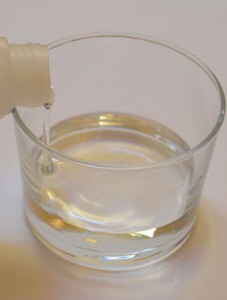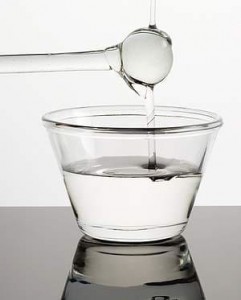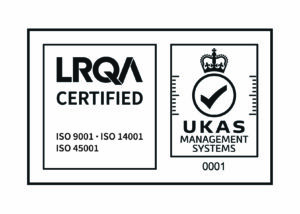What it is pure or USP Glycerin?
Glycerol (Glycerin) is a very important molecule that is used in different fields and areas.
It is also known as glycerol and it is a triol (triol) with a skeleton of 3 carbons, all occupied by a hydroxyl group, hence its name IUPAC: propane-1, 2, 3-triol or 1, 2, 3 propanetriol.
- CAS Number: 56-81-5
- EC number: 232-293-8
- Origin of Glycerin
- Properties and applications of pure glycerine
- Glycerol Presentations
- Liquid Glycerin and Vegetable Glycerin
- Table Glycerol Composition
Origin of Glycerin
 Liquid glycerine is mainly obtained by the hydrolysis of fats and oils using the so-called Fat Splitting method, i.e. a splitting of fats/oils from Colgate-Emery which yields two products: crude glycerine (at a concentration of approximately 12-15%) and the free fatty acid chains.
Liquid glycerine is mainly obtained by the hydrolysis of fats and oils using the so-called Fat Splitting method, i.e. a splitting of fats/oils from Colgate-Emery which yields two products: crude glycerine (at a concentration of approximately 12-15%) and the free fatty acid chains.
The traditional method used to obtain the fats and oils from glycerine was through saponification of fats and oils, as if it were a by-product of the production of soap glycerine. The triglyceride reacts with caustic soda to provide soap and glycerol.
Another highly developed and booming method to achieve this is through the transesterification reaction of oils and fats to obtain biodiesel. Oils and fats react with an alcohol (methanol or ethanol) to yield methyl or ethyl esters and glycerin.
However, the last and most modern mechanism to obtain glycerol is related to the progress of the polymer industry derived from propylene, specifically, in the synthesis of epichlorohydrin (precursor of plastic resins, epoxy, exchange, among others).
Properties and applications of pure glycerine
Glycerin is one of the most important substances in the world of oleochemicals as it is an ingredient that is applied to many products. It is an extremely versatile molecule that is used in virtually all fields of industry.
- Food(food grade): additive E-422 present in many preparations.
- Animal Food (feed grade): moisturizer, additive, etc.
- Pharmacy/Medicine: different qualities depending on the established regulations (USP, EUP, GBP…), it can be used in multiple preparations such as suppositories, additives, lubricants, coadjuvants… In this sector, it is frequently used.
- Other sectors such as: cosmetics, detergents, softeners, tobacco, explosives, esters, polymers, paints
 As can be seen, this element is widely used in different sectors. And it is that its use is very extended in diverse types of businesses.
As can be seen, this element is widely used in different sectors. And it is that its use is very extended in diverse types of businesses.
Glycerin is a very important medium in the oleochemical industry. Its plasticity and excellent properties allow a wide range of uses in different markets. The safety of plant Glycerol, the efficiency and performance of oleochemicals are sometimes superior to those of chemicals.
Oleochemicals are an increasingly attractive alternative for different industries, since they are a fairly ecological and profitable medium that also meets the highest expectations. For this reason, we make a wide range of products available to different markets in order to manufacture all types of industrial goods and articles.
Glycerin is, without a doubt, one of the most relevant and powerful substances in the oleochemical market.
Glycerol Presentations
Glycerin: GL-99, GL-99 USP/ EUP, GL-85, GL-86,5 EP/UBP
Liquid Glycerin and Vegetable Glycerin
You can find each and every one of our products supplied in 180 kg. drums and 850 kg. bulk or container tanks. The best quality in liquid glycerine and vegetable glycerine on the market. For more information you can contact us through our web form or by phone.
Table Glycerol Composition
The Glycerol information table is attached to this page:
| TABLE GLYCEROL COMPOSITION | ||||
| ORIGIN | NATURAL | |||
| ANALISYSMETHOD | UNITS | GL-86,5 | GL-99 | GL-99-HC |
| WATER ISO 760 |
% | 12-14 | MAX. 0,5 | MAX. 1 |
| ASHES BS – 5711- 6 |
% | – | – | MAX. 0,05 |
| GLYCEROL APAG GL-008 |
% | MIN. 86 | MIN. 99,5 | MIN. 99 |
| COLOUR AOCSTd 1a64 |
Gardner | – | – | MAX. 3 |
| RELATIVE DENSITY BS – 5711- 4 |
AAT
20º C |
MIN. 1,226 | MIN. 1,262 | MIN. 1,258 |
| REFRACTIVE INDEX APAG GL-006 |
AAT
20º C |
MIN. 1,452 | MIN. 1,472 | MIN. 1,470 |
| COLOUR ISO 2211 |
APHA/HAZEN | MAX. 10 | MAX.20 | – |
| ACIDITY/ALCALINITY European Pharmacopoeia |
meq./100 gr. | MAX. 0,08 | MAX. 0,08 | – |
| ESTERS European Pharmacopoeia |
meq./100 gr. | MAX. 0,8 | MAX. 0,8 | – |
| ASHES SULFURICAS European Pharmacopoeia |
% | MAX. 0,01 | MAX. 0,01 | – |
| SULPHATES United States Pharmacopoeia |
ppm | – | MAX. 20 | – |
| HEAVY METALS European Pharmacopoeia |
ppm Pb | MAX. 5 | MAX. 5 | – |
| CLHORIDES European Pharmacopoeia |
ppm Pb | MAX. 10 | MAX. 10 | – |
| HALOGENATED COMPOUNDS European Pharmacopoeia |
– | PASA TEST | PASA TEST | – |
| ALDEHYDE/REDUCING SUBSTANCES European Pharmacopoeia |
– | PASA TEST | PASA TEST | – |
| SUGARS European Pharmacopoeia |
– | PASA TEST | PASA TEST | – |
| IMPURITY A AND RELATED SUBSTANCESEuropean Pharmacopoeia | – | PASA TEST | PASA TEST | – |
Access to our acids and oils available in our company:


